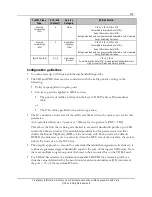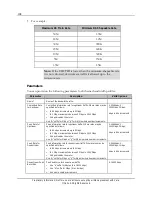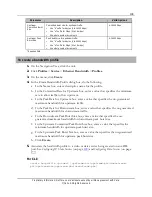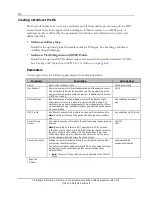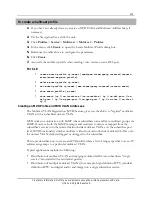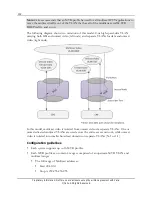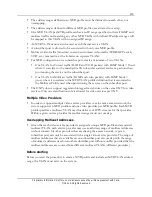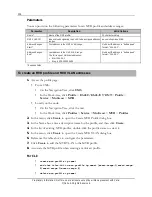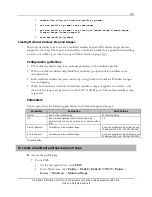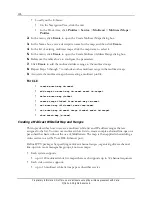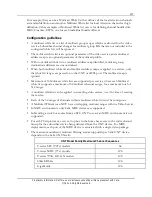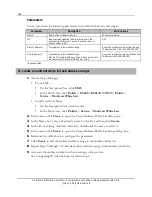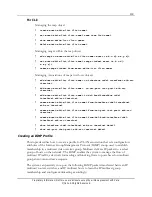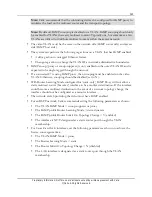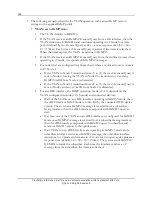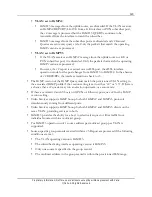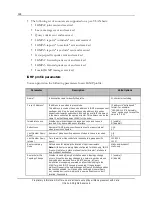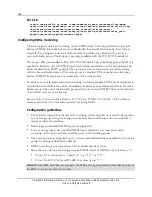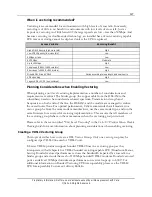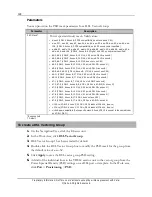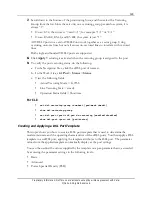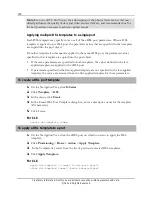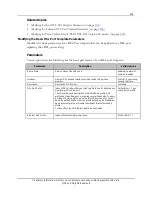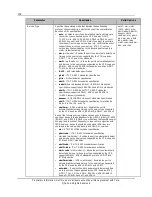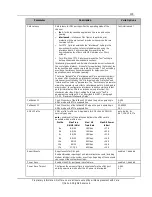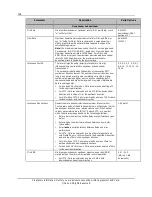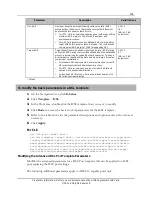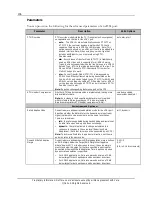
121
Proprietary Information: Not for use or disclosure except by written agreement with Calix.
© Calix. All Rights Reserved.
Note:
Calix recommends that the subtending devices be configured for IGMP proxy to
minimize the load on the multicast router and the transport topology.
Note:
By default, IGMP snooping is disabled on a VLAN. IGMP snooping should only
be enabled for VLANs that carry multicast content. Typically one, but sometimes a few
VLANs are utilized to distribute multicast content within the access network.
The video VLAN must be the same on the network side (IGMP router side) and access
side (IGMP host side).
The system can perform the following tag actions on a VLAN that has IGMP enabled:
Add-tag action to untagged Ethernet frames.
Change-tag action to change the VLAN ID at network administrative boundaries.
IGMP snoop (proxy or snoop-suppress) is only enabled on the outer VLAN ID and is
expected to be single-tagged through the network.
If a connected C7 is using IGMP proxy, then snooping must be enabled on the video
VLAN. Otherwise, snooping should be disabled (set to N).
With Router Learning Mode configured for ‘static-only’, IGMP Proxy will not allow a
static multicast router (‘mrouter’) interface to be a multicast destination. If the interface
could become a multicast destination in the event of a network topology change, the
interface should not be configured as a mrouter interface.
The network switch providing the video must have IGMP enabled.
For an RSTP network, Calix recommends setting the following parameters as shown:
The VLAN IGMP Mode = snoop-suppress or proxy
The IGMP profile Router Learning Mode = static-dynamic
The IGMP profile Router Solicit On Topology Change = Y (enabled)
The interface is NOT designated as a static router port through the VLAN
membership.
For Cross-Card LAG interfaces, set the following parameters as shown to achieve the
best re-convergence time:
The VLAN IGMP Mode = proxy
The Router Learning Mode = static
The Router Solicit On Topology Change = N (disabled)
The LAG interface is designated as a static router port through the VLAN
membership.

